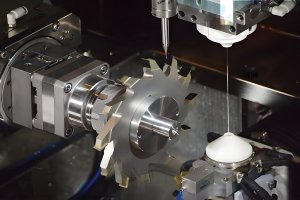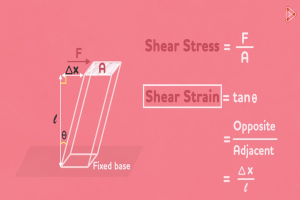Milling is one of the most fundamental and widely used processes in CNC machining. Whether you are a technician looking to deepen your understanding of CNC milling or a procurement officer needing guidance on selecting the best CNC machined parts, this comprehensive guide covers the essential basics of milling and provides actionable tips to achieve high-quality results.
The Basics of CNC Milling
What is CNC Milling?
CNC milling is a machining process that involves the use of rotating cutting tools to remove material from a workpiece, shaping it into the desired form. The cutting tool, typically a milling cutter, moves along multiple axes to precisely shape the workpiece according to the programmed instructions.
Key Components of a CNC Milling Machine
- Spindle: The spindle holds and rotates the cutting tool. It is the heart of the milling machine, determining the tool’s speed and power.
- Worktable: The workpiece is fixed on the worktable, which moves in the X, Y, and Z directions to bring the material into contact with the cutting tool.
- Control Panel: The control panel is where the operator inputs the machining program, controlling the movement and speed of the cutting tool and worktable.
- Cutting Tool: The cutting tool is the part of the machine that does the actual cutting. It comes in various shapes and sizes, depending on the specific milling operation.
- Coolant System: This system delivers coolant to the cutting area to reduce heat and friction, prolonging the life of the cutting tool and improving the quality of the machined surface.
Types of Milling Operations
CNC milling can perform a wide range of operations, each suited to different applications and material types. Here are some of the most common milling operations:
- Face Milling: This is the most common milling operation, where the cutting tool removes material from the surface of the workpiece. It is often used to create flat surfaces or to reduce the thickness of a workpiece.
- End Milling: In this operation, the cutting tool removes material from the workpiece’s sides, typically used to create complex shapes, slots, and cavities.
- Slot Milling: Slot milling involves cutting slots or grooves into the workpiece. This operation is often used in the creation of keyways or channels.
- Contour Milling: Contour milling follows the workpiece’s contours, allowing for the creation of complex shapes with varying depths.
- Profile Milling: Similar to contour milling, profile milling involves cutting along the outer edges of the workpiece, often used to create intricate designs or features on the part’s exterior.
- Plunge Milling: Plunge milling involves the cutting tool plunging directly into the workpiece. It is ideal for creating deep cavities or holes.
Milling Materials and Their Properties
Understanding the properties of the materials being milled is crucial for achieving high-quality results. Here are some common materials used in CNC milling and their characteristics:
- Aluminum: Lightweight and easy to machine, aluminum is widely used in aerospace, automotive, and consumer electronics. It has good thermal conductivity but can be prone to deformation during machining.
- Steel: Steel is strong and durable, making it ideal for parts that need to withstand high stress. However, it requires more power to machine and can cause significant tool wear.
- Titanium: Titanium is known for its high strength-to-weight ratio and excellent corrosion resistance. It is used in aerospace, medical, and marine applications. However, it is difficult to machine due to its tendency to work-harden and low thermal conductivity.
- Plastics: Plastics like ABS, PEEK, and nylon are lightweight and easy to machine. They are used in various applications, from consumer goods to medical devices. However, they can be prone to melting or warping during machining.
- Copper and Brass: These materials have excellent electrical conductivity and are often used in electrical components. They are relatively easy to machine but can be prone to smearing or galling.
- Composites: Composites like carbon fiber or fiberglass are lightweight and strong, used in aerospace, automotive, and sports equipment. However, they can be challenging to machine due to their abrasive nature.
Milling Tool Selection
Choosing the right milling tool is critical to the success of any CNC milling operation. Here are the key factors to consider:
- Tool Material: Common tool materials include high-speed steel (HSS), carbide, and ceramic. Carbide tools are popular for their hardness and wear resistance, while HSS tools are more affordable and versatile.
- Tool Geometry: The geometry of the tool, including its flutes, cutting edges, and coatings, affects its performance. For example, tools with more flutes can remove more material but may generate more heat.
- Tool Coatings: Coatings like TiN (Titanium Nitride), TiAlN (Titanium Aluminum Nitride), and DLC (Diamond-Like Carbon) can improve tool life and performance by reducing friction and heat generation.
- Tool Size: The size of the tool, including its diameter and length, should be chosen based on the dimensions of the workpiece and the specific milling operation.
Optimizing CNC Milling Operations
To achieve high-quality results in CNC milling, it is essential to optimize the machining process. Here are some tips:
- Proper Fixturing: Ensure that the workpiece is securely fixed to prevent any movement during machining. Proper fixturing reduces vibration and improves accuracy.
- Coolant Usage: Use the appropriate coolant for the material being machined to reduce heat and friction. This not only extends the life of the cutting tool but also improves the surface finish of the part.
- Feed Rate and Spindle Speed: Adjust the feed rate and spindle speed based on the material and the type of operation. Too high a feed rate can cause tool breakage, while too low a spindle speed can result in poor surface finish.
- Tool Path Optimization: Optimize the tool path to minimize unnecessary movements and reduce machining time. This involves programming the CNC machine to follow the most efficient cutting sequence.
- Tool Maintenance: Regularly inspect and maintain the cutting tools to ensure they are sharp and free of damage. Dull tools can lead to poor-quality cuts and increased tool wear.
Troubleshooting Common Milling Issues
Even with careful planning and execution, milling operations can encounter problems. Here are some common issues and how to address them:
- Tool Wear: If tools wear out too quickly, it could be due to improper feed rates, spindle speeds, or coolant usage. Adjust these parameters and consider using tools with harder materials or better coatings.
- Vibration and Chatter: Vibration can be caused by loose fixturing, worn spindle bearings, or incorrect tool paths. Ensure the workpiece is securely fixed and adjust the tool path to reduce vibration.
- Poor Surface Finish: A rough surface finish can result from dull tools, incorrect feed rates, or inadequate coolant. Check the tool’s condition, adjust the feed rate, and ensure sufficient coolant is being applied.
- Tool Breakage: Tools may break due to excessive cutting forces, incorrect tool selection, or poor programming. Reduce the cutting forces by lowering the feed rate, using the correct tool, and optimizing the tool path.
- Dimensional Inaccuracy: Inaccuracies in the final part can be due to tool wear, improper fixturing, or machine calibration issues. Regularly check tool conditions, ensure secure fixturing, and calibrate the machine as needed.
Case Studies and Practical Applications
Case Study 1: Improving Surface Finish in Aluminum Milling
A CNC machine shop was experiencing poor surface finishes when milling aluminum parts. After reviewing the process, it was determined that the feed rate was too high, and the cutting tool was dull. The shop implemented the following changes:
- Reduced the feed rate by 20%.
- Switched to a new carbide tool with a TiAlN coating.
- Increased coolant flow to reduce heat.
These changes resulted in a significant improvement in the surface finish, reducing the need for post-machining processes like polishing.
Case Study 2: Reducing Tool Wear in Titanium Milling
A manufacturer of aerospace components was struggling with excessive tool wear when machining titanium. The high strength and low thermal conductivity of titanium were causing rapid tool wear and increasing production costs. The following strategies were implemented:
- Switched to a tool with a DLC coating to reduce friction.
- Reduced the spindle speed and feed rate to lower cutting forces.
- Implemented a more aggressive coolant strategy to manage heat.
These adjustments extended the tool life by 30%, reducing tooling costs and improving overall production efficiency.
Tables and Data
Table 1: Common Materials Used in CNC Milling and Their Properties
| Material | Density (g/cm³) | Hardness (HB) | Tensile Strength (MPa) | Thermal Conductivity (W/m·K) |
|---|---|---|---|---|
| Aluminum | 2.7 | 30-150 | 70-700 | 235 |
| Steel | 7.85 | 120-220 | 400-1,800 | 50 |
| Titanium | 4.5 | 120-380 | 900-1,200 | 20 |
| Brass | 8.5 | 60-200 | 200-800 | 110 |
| Plastics | 0.9-1.5 | 10-100 | 30-100 | 0.2-0.3 |
Table 2: Recommended Tooling Parameters for Common Materials
| Material | Tool Material | Spindle Speed (RPM) | Feed Rate (mm/min) | Coolant Type |
|---|---|---|---|---|
| Aluminum | Carbide | 6,000-12,000 | 1,000-2,500 | Water-based |
| Steel | HSS/Carbide | 2,500-4,500 | 500-1,200 | Oil-based |
| Titanium | Carbide/DLC | 1,500-3,000 | 100-500 | Water-based |
| Brass | Carbide | 4,000-6,000 | 1,200-2,000 | Water-based |
| Plastics | HSS/Carbide | 10,000-20,000 | 2,000-3,500 | None/Minimal |
CNC milling is a versatile and essential process in manufacturing, capable of producing complex and high-quality parts. By understanding the basics of milling, selecting the right tools and materials, and optimizing the machining process, technicians and procurement officers can ensure that their CNC machining operations yield the best possible results. Regular maintenance, troubleshooting, and continuous improvement are key to maintaining high standards in CNC milling.
Whether you’re in the early stages of CNC milling or looking to refine your processes, the insights and tips provided in this guide will help you achieve success in your machining endeavors.
Other Articles You Might Enjoy
- Is Copper the Right Choice for Electrical Component CNC Machining? A Detailed Analysis
CNC Machining of Electrical Components Utilizing Copper In the field of electrical engineering, Computer Numerical Control (CNC) machining plays an integral role, particularly in the development and manufacturing of electrical…
- Basic Knowledge of CNC Turning-Milling Compound Machining
Due to the different CNC systems configured on CNC milling machines, the instructions used vary in definition and function, but their basic functions and programming methods remain the same
- Precision Aluminum Machining for Aerospace: Custom CNC Services
Precision Aluminum Machining for Aerospace: Custom CNC Services In the world of manufacturing, precision aluminum machining plays a pivotal role, particularly in aerospace industries where superior precision is required. As…
- The Basics of CNC Turning-Milling Compound Machining
The Basics of CNC Turning-Milling Compound Machining Programming The programming basics for CNC turning-milling compound machining can vary due to different CNC systems used in milling machines. These systems may…
- Face Milling Essentials for CNC Machining Parts
Face milling is an essential operation in CNC machining, aimed at controlling the height of the workpiece and ensuring a smooth surface finish. This process often uses multi-tooth cutters, known…
- Revolutionizing Renewable Energy with CNC Machined Components
Introduction: Renewable Energy and CNC Machined Components Renewable energy harnesses power from natural sources such as the sun, wind, and water, making it a sustainable and eco-friendly alternative to traditional…






